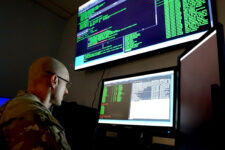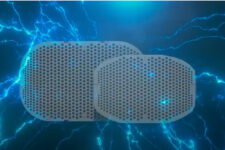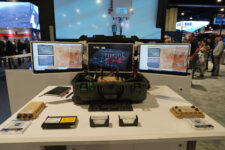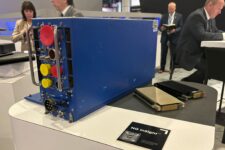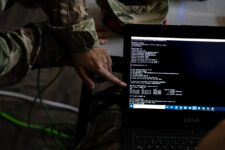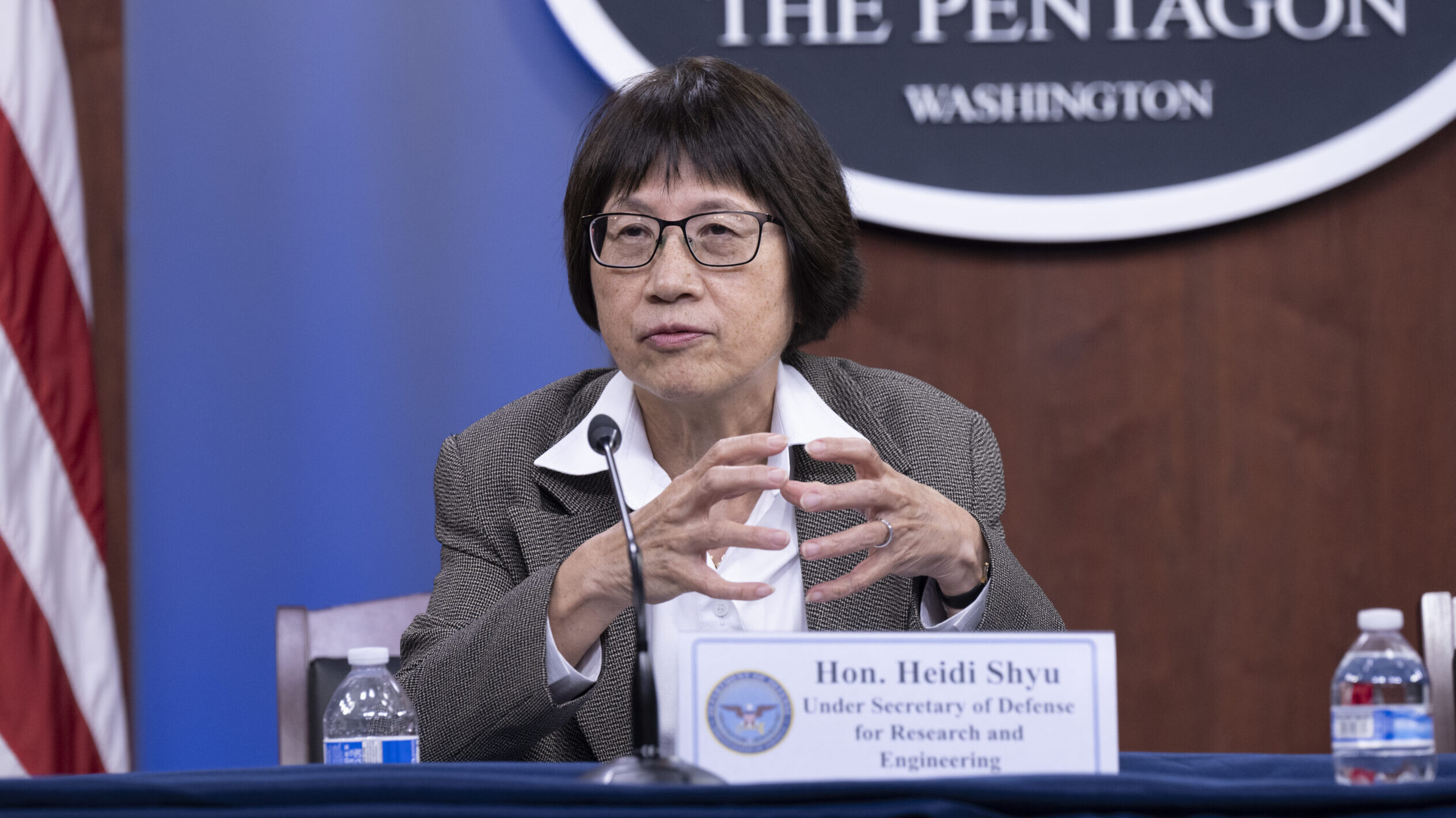
Under Secretary of Defense for Research and Engineering Heidi Shyu speaks during a press briefing announcing a university-affiliated research center initiative with historically Black colleges and universities, the Pentagon, Washington, D.C., June 27, 2022. (DoD photo by Lisa Ferdinando)
WASHINGTON — The Pentagon’s chief technology officer’s responsibilities could be expanded to include more oversight of commercial tech for defense under a new role and title proposed in a draft version of a key House subcommittee’s draft fiscal 2024 defense policy bill, as lawmakers push DoD to rapidly field new technologies.
Proposed by the House Armed Services Committee’s Cyber, Information Technology and Innovation (CITI) Subcommittee, the undersecretary of defense for research and engineering would be renamed to the undersecretary of defense for technology integration and innovation.
According to the draft bill, released on Monday, the responsibilities under the role would entail much of what the position currently already does, including establishing policies relating to commercial technologies and serving as the principal advisor to the secretary of defense on commercial innovation. But in the new post the undersecretary would also establish “an alternate path to integrate commercial technology into the Department that does not include applying the Joint Capabilities Integration and Development System process to the acquisition of technology that readily exists in the commercial sector” — though it doesn’t say exactly what the alternate path should look like.
The position of undersecretary of defense for research and engineering is currently held by Heidi Shyu, who leads all science and technology development efforts and investments across the department. The draft bill says Shyu would serve under the new role, and that the proposed change would take effect in one year after the bill becomes law.
The expanded title, more than anything, would reflect much of what Shyu has already attempted to do in her first two years in the position, where she’s spearheaded efforts focused on quick technology development and fielding across the department. In February last year, Shyu identified 14 technology areas deemed critical to the Pentagon, including artificial intelligence, microelectronics and space technology, in a memo obtained by Breaking Defense.
Under another effort started in 2021 meant to support future joint requirements for DoD, dubbed the Rapid Defense Experimentation Reserve, Shyu is holding two “sprints” per year addressing 32 proposed areas of experimentation. The first round of experiments started this year focused on long-range fires and included a joint project lined up with the UK and Australia.
In May, DoD released its science and technology strategy, putting to paper themes emphasized by Shyu in the past: accelerating the development of joint warfighting capabilities, fielding capabilities “at speed and scale” and “ensur[ing] the foundations for research and development” through workforce development and upgrading physical and digital infrastructure.
The subcommittee has also tasked Shyu to develop a strategy for how DoD can use intellectual property (IP) to “enhance” its ability to procure emerging technologies and outpace adversaries. Lawmakers are asking Shyu to coordinate with the secretary of defense to provide recommendations for how to use IP in the department’s research and engineering programs and “in the context of strategic competition, including in hybrid warfare and deterrence.”
The plan should also include how DoD plans to protect against IP theft and “methods for encouraging innovation, solutions at scale, and the use of patents across the Department of Defense by establishing an integrated, cross-service approach to the identification, prioritization, development, and fielding of emerging capabilities and technologies.”
A number of optional elements for the IP strategy are also included in the bill, like developing an innovation warfare strategy that would “further develop the technological base of the Department of Defense and create intellectual property security tools” to outpace adversaries and recommendations for policy changes.
The undersecretary of defense for research and engineering position has also historically led oversight over other DoD agencies, including the Defense Innovation Unit. In April, DoD announced DIU would shift away from that organizational structure and will now report directly up to the secretary of defense.
The HASC CITI subcommittee draft bill also includes a provision that could codify DoD’s reorganization of DIU, suggesting lawmakers concur with the cutting edge tech agency’s importance to national defense. Lawmakers are asking for DIU to submit a report on the agency’s staffing levels to both the House and Senate armed services committees. The report should also include a plan “to address any staffing shortfalls identified as part of the assessment” and “for funding any activities necessary to address such shortfalls.”
